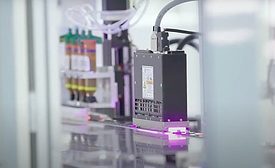Home » adhesives in assembly
Articles Tagged with ''adhesives in assembly''
Adhesives offer significant advancements in electric vehicle safety, cost, durability, and performance.
Read More
Ask Dr. Dave
Adhesives for Fiberglass Bonding
What are the best adhesives for bonding fiberglass components?
July 20, 2021
HENKEL: Primerless Adhesive for Work Truck and Manufacturing Applications
The primerless adhesive is suitable for a variety of work truck and manufacturing applications that require high-strength adhesion of loads to thin walls or small areas.
July 6, 2021
Common Dispensing Challenges and Solutions for Adhesives and Other Materials
Nearly 900 plant engineering and management personnel from diverse industries within the U.S. weigh in on specific challenges they face relating to their dispensing methods.
May 25, 2021
Modernizing Assembly Lines with UV LED Curing
Adhesive bonding, sealing, and coating processes in factory assembly lines are rapidly upgrading to UV LED curing technology.
May 12, 2021
DuPont to Build New Adhesives Manufacturing Facility in China
Products manufactured at the facility will serve customers in the transportation industry, primarily vehicle electrification applications and lightweighting.
April 26, 2021
From the Editor
Exploring Assembly Applications for Adhesives and Sealants
From automotive and construction to general industrial applications, the use of adhesives and sealants is expanding in assembly operations around the world.
April 23, 2021
Ask Dr. Dave
Superglues vs. Polyurethane Glues
Should I use superglue or one of the new polyurethane glues for general-purpose assembly and home repairs?
April 19, 2021
An Ounce of Prevention Leads to Efficient Adhesive Assembly Operations
Environmentally friendly cleaning and preventative maintenance can pay dividends in terms of efficient operation and a safer manufacturing environment.
April 12, 2021
Keep the info flowing with our eNewsletters!
Get the latest industry updates tailored your way.
JOIN TODAY!Copyright ©2024. All Rights Reserved BNP Media.
Design, CMS, Hosting & Web Development :: ePublishing











